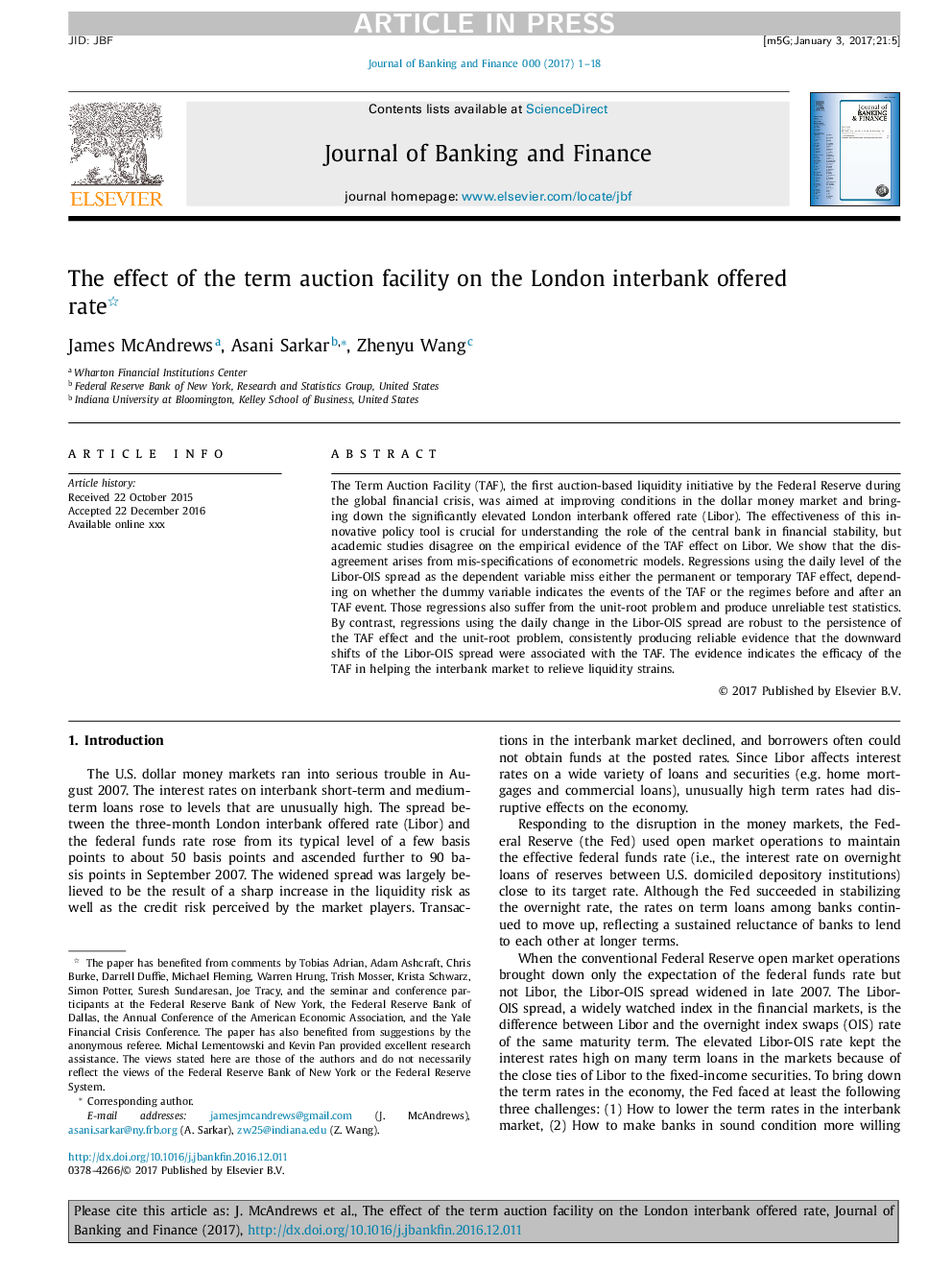| Article ID | Journal | Published Year | Pages | File Type |
|---|---|---|---|---|
| 5088045 | Journal of Banking & Finance | 2017 | 18 Pages |
Abstract
The Term Auction Facility (TAF), the first auction-based liquidity initiative by the Federal Reserve during the global financial crisis, was aimed at improving conditions in the dollar money market and bringing down the significantly elevated London interbank offered rate (Libor). The effectiveness of this innovative policy tool is crucial for understanding the role of the central bank in financial stability, but academic studies disagree on the empirical evidence of the TAF effect on Libor. We show that the disagreement arises from mis-specifications of econometric models. Regressions using the daily level of the Libor-OIS spread as the dependent variable miss either the permanent or temporary TAF effect, depending on whether the dummy variable indicates the events of the TAF or the regimes before and after an TAF event. Those regressions also suffer from the unit-root problem and produce unreliable test statistics. By contrast, regressions using the daily change in the Libor-OIS spread are robust to the persistence of the TAF effect and the unit-root problem, consistently producing reliable evidence that the downward shifts of the Libor-OIS spread were associated with the TAF. The evidence indicates the efficacy of the TAF in helping the interbank market to relieve liquidity strains.
Related Topics
Social Sciences and Humanities
Economics, Econometrics and Finance
Economics and Econometrics
Authors
James McAndrews, Asani Sarkar, Zhenyu Wang,
